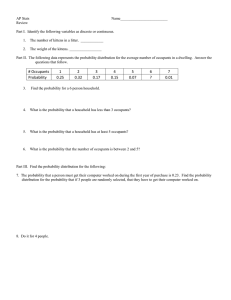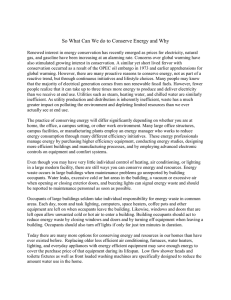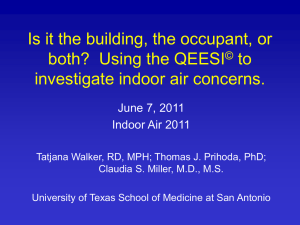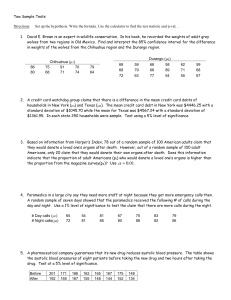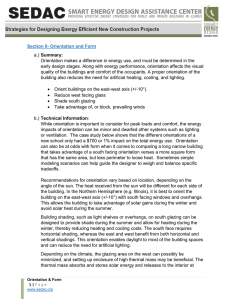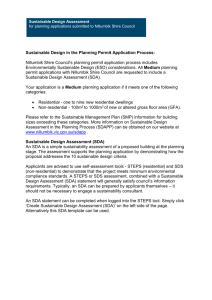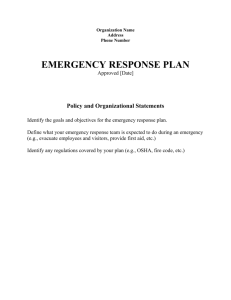Sustainable Strategies for the Delta Kappa Omega Providence
advertisement
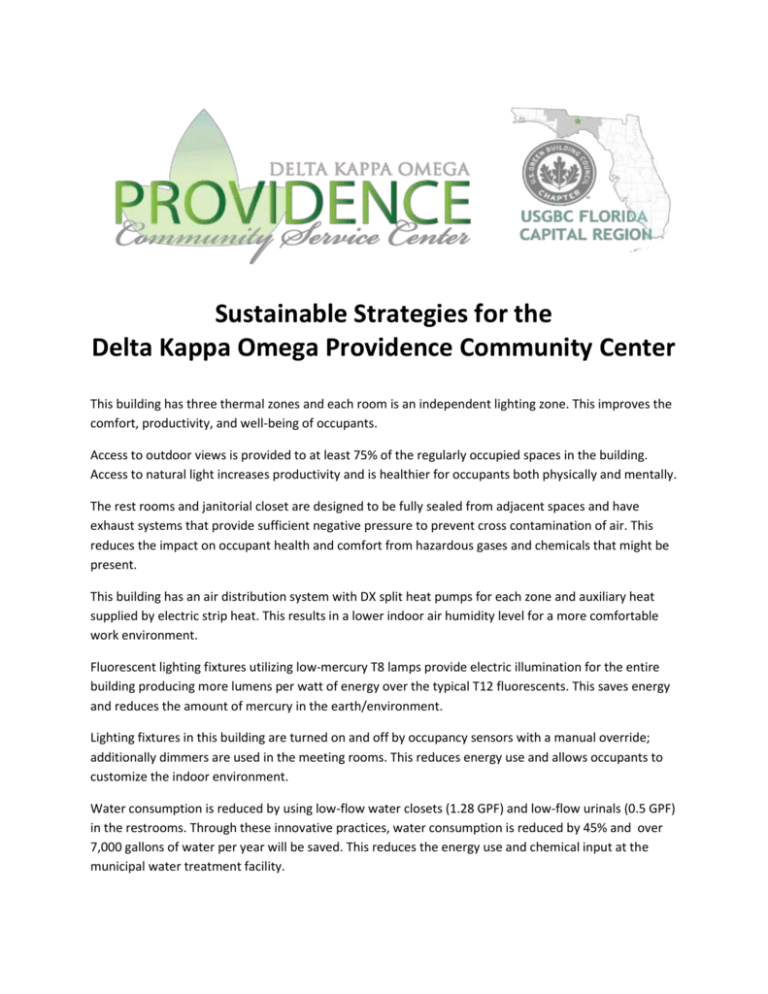
Sustainable Strategies for the Delta Kappa Omega Providence Community Center This building has three thermal zones and each room is an independent lighting zone. This improves the comfort, productivity, and well-being of occupants. Access to outdoor views is provided to at least 75% of the regularly occupied spaces in the building. Access to natural light increases productivity and is healthier for occupants both physically and mentally. The rest rooms and janitorial closet are designed to be fully sealed from adjacent spaces and have exhaust systems that provide sufficient negative pressure to prevent cross contamination of air. This reduces the impact on occupant health and comfort from hazardous gases and chemicals that might be present. This building has an air distribution system with DX split heat pumps for each zone and auxiliary heat supplied by electric strip heat. This results in a lower indoor air humidity level for a more comfortable work environment. Fluorescent lighting fixtures utilizing low-mercury T8 lamps provide electric illumination for the entire building producing more lumens per watt of energy over the typical T12 fluorescents. This saves energy and reduces the amount of mercury in the earth/environment. Lighting fixtures in this building are turned on and off by occupancy sensors with a manual override; additionally dimmers are used in the meeting rooms. This reduces energy use and allows occupants to customize the indoor environment. Water consumption is reduced by using low-flow water closets (1.28 GPF) and low-flow urinals (0.5 GPF) in the restrooms. Through these innovative practices, water consumption is reduced by 45% and over 7,000 gallons of water per year will be saved. This reduces the energy use and chemical input at the municipal water treatment facility. The heating, ventilation, and air conditioning systems in the building do not use CFC-based refrigerants. This reduces the emission of ozone depleting chemicals released into the atmosphere. Energy consumption in the building is reduced by saving 26.1% of the end use function. This improved performance reduces the annual energy cost which in turn reduces pollution generated by power plants. During the construction of this building, over 63% of the demolition and construction material was salvaged, reused, or recycled. This waste reduction conserved energy and saved landfill space. Over 30% of all materials used in this building are both manufactured and harvested within a 500-mile radius of the building. Buying regionally reduces transportation costs, gas consumption and pollution and boosts our local economy. The project is located within 1/4 mile walking distance from a main building entrance of one or more stops for two or more public, campus, or private bus lines and usable by building occupants. Specific parking places have been assigned for alternative fuel and carpool vehicles. These types of vehicles reduce the burning of fossil fuels and air pollution. Stormwater management on the site is designed to prevent the post-development runoff from exceeding the pre-development runoff for a 24-hour design storm, thereby promoting infiltration of rainfall into the ground and reducing downstream flooding potential by capturing and treating stormwater runoff from 90% of the average annual rainfall using best management practices. This removes a high percentage of post-development total suspended solids and further allows pollutants in rainwater to be broken down by microorganisms in the soil. The building owners have a renewable energy contract to provide at least 35% of the building’s electricity from renewable sources, as defined by the Center for Resource Solutions’ Green-e Energy product certification requirements. During building construction, low emitting materials were used. They included water based solvents and products with low volatile organic compounds. They reduced the installers’ and occupants’ exposure to indoor air contaminates. The building and the site have been designated as no-smoking areas. This results in zero exposure to tobacco smoke for non-smokers and reduces associated health risks. This building was designed with space for recycling containers. Recycling reduces the use of energy, water, oil, and other raw materials and saves valuable landfill space.
